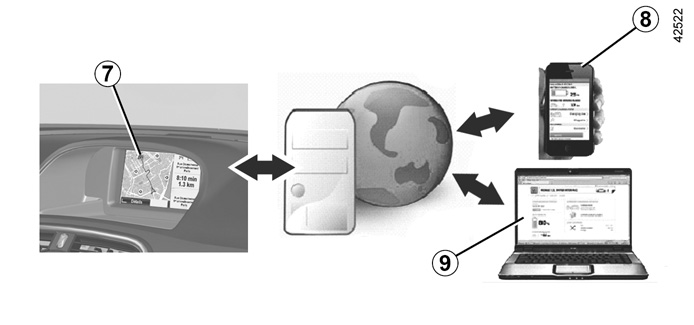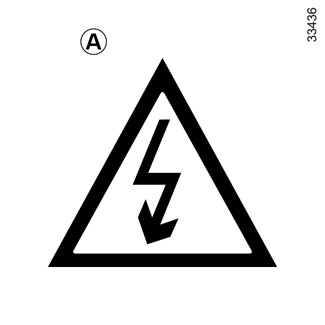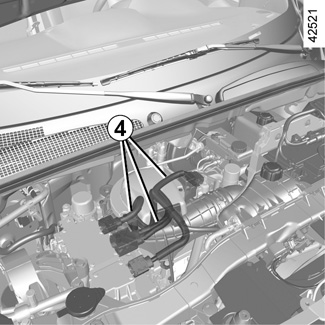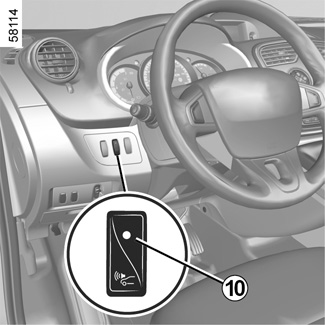ELECTRIC VEHICLE: introduction

Electric vehicles have special features, but operate in a similar manner to conventional vehicles.
The main difference in electric vehicles is the exclusive use of electric energy instead of fuel, as used in conventional vehicles.
We therefore recommend that you read these instructions describing your electric vehicle carefully.

Connected services
(depending on vehicle)
Your electric vehicle has connected services that provide information and/or control:
- your vehicle’s charging status;
- the traction battery charging programming, based on certain choices on offer;
- air-conditioning remote programming (please see the information on “Air-conditioning: remote activation” in Section 3);
-...
You can access these services by:
- external digital devices (mobile telephones 8, tablets 9 etc.) ;
- multimedia screen 7.
For more information, refer to the multimedia equipment instructions or contact an Approved Dealer.
You can subscribe to a connected service or extend it at any time by consulting an authorised dealer.
Batteries
Your electric vehicle has two types of battery:
- a 400V traction battery;
- a standard 12V battery, identical to the one used in conventional vehicles.
Traction battery
This battery stores the energy necessary to operate the motor in your electric vehicle properly. As with any battery, it discharges after use, and must be regularly recharged.
You do not have to wait until the traction battery hits the reserve level in order to recharge it.
Battery charging times vary depending on the type of specific wall unit socket or public terminal you connect to.
Your vehicle range will depend on the charge level of the traction battery, and also on your driving style, the outdoor temperature and the type of road.
Please refer to information on “Vehicle range: recommendations” in Section 2.
12 volt battery
The second battery, which on your vehicle is a 12 V battery comparable to that used in vehicles with combustion engines, supplies the energy required to operate vehicle equipment (lights, windscreen wipers, braking assistance etc.).


The A symbol identifies the electrical elements in your vehicle which may present health risks.
400 volt electrical circuit
The 400V electrical circuit can be recognised by the orange 4 cables and by the elements signalled using the ṑ symbol.
The vehicle’s electrical system uses a voltage of approximately 400 volts. This system can get hot during and after switching off the ignition. Respect warning messages given on the labels stuck onto the vehicle.
All interventions or modifications to the 400V electrical system (components, cables, connectors, traction battery) are strictly prohibited due to the risks they present to your safety. Please contact an authorised dealer.
The risk of serious burns or electric shocks can lead to death.
Driving
As with a vehicle fitted with an automatic gearbox, you will have to get used to not using your left foot, and not using this foot to brake.
When driving, if you lift your foot off the accelerator pedal or depress the brake pedal, the motor generates electrical current during deceleration, and this energy is used to brake the vehicle and recharge the traction battery. Please refer to the information on the “Charge meter” in Section 2.
Special conditions
After a maximum charge of the battery and during the first few miles of using the vehicle, the engine brake will be temporarily reduced. Please adapt your driving style appropriately.
Bad weather, flooded roads:
| Do not drive through floods if the depth of water is above the lower edge of the wheel rims. |
The engine brake should under no circumstances be used as a substitute for the brake pedal.
Obstructions to the driver
On the driver’s side, only use mats suitable for the vehicle, attached with the pre-fitted components, and check the fitting regularly. Do not lay one mat on top of another.
There is a risk of wedging the pedals
Noise
Electric vehicles are particularly quiet. You will not yet necessarily be used to it, and neither will other road users. It is difficult for them to hear the vehicle when it is moving.
As the motor is silent, you will hear noises that you are not used to hearing (aerodynamic noises, tyre noise, etc.)
Each time the ignition is switched off, the ventilation will be switched off after about ten seconds.
Pedestrian horn
The pedestrian horn enables you to warn others of your presence - especially pedestrians and cyclists.
When the engine is started, the pedestrian horn is activated automatically. The sound is triggered when the vehicle speed is between about 1 and 19 mph (1 and 30 km/h).

If a fault with the pedestrian horn is detected, the 10 warning light flashes. Consult an approved dealer.
Your electric vehicle is silent, so when you get out, always check that the gear selector is on P, engage the handbrake and switch off the ignition.
RISK OF SERIOUS INJURY
